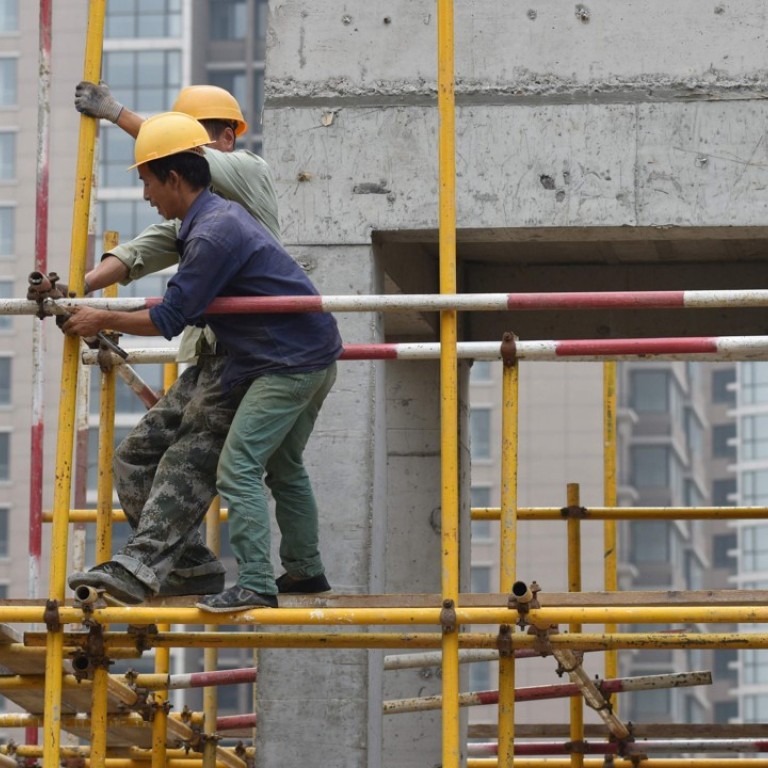
China walks monetary tightrope to keep debt in check, growth on track
Latest figures suggest funding for development projects still readily available despite slowest ever growth of money supply
China’s latest economic figures suggest the central bank is having to walk a fine line between controlling debt and supporting the government’s development plans, analysts said.
According to data published by the People’s Bank of China on Tuesday, the broadest measure of money supply, known as M2, rose 9.2 per cent in July, its lowest ever monthly expansion and far below the government’s 12 per cent annual target. Meanwhile, the value of all loans in the economy, or “aggregate social financing”, increased by 13.2 per cent year on year in July, against a target of 12 per cent.

Zhao Yang, chief China economist with Nomura Securities, told the Post on Tuesday that the bulk of China’s efforts to rein in debt were taking place “within the financial system”, so that support for the real economy, namely households, businesses and infrastructure projects, had “not fallen significantly”.
In the aftermath of the 2008 financial crisis, China adopted a “super loose” monetary policy in a bid to drive growth. The downside was that it sparked a huge increase in debt levels and financial risk.
At a financial work conference last month, President Xi Jinping renewed his call for a reduction in debt levels, while two days after the meeting, the central bank announced it would host a new regulatory committee to oversee state-level financial issues and ensure stability.
In the meantime, the central bank needs also to find ways to support the country’s expansion plans.
The government set a target of 6.5 per cent GDP growth for 2017. Actual growth in the first half of the year was 6.9 per cent.
Ding Shuang, chief China economist at Standard Chartered, said that despite factory production, investment and consumer spending all coming in under forecast in July, the central bank has no obvious reason to alter its monetary policy stance as growth is still on track.
“[Also] the central bank is unlikely to tighten further because the 19th Party Congress is approaching,” he told the Post.
The twice-a-decade meeting will decide China’s leadership line-up for the next five years, and all government and party organisations are keen to ensure the event goes smoothly.
“The safe move is to keep the current policy tone unchanged,” Ding said.
On Tuesday, the International Monetary Fund revised up its economic growth forecasts for China, despite warning that its debt level “raises concerns for medium-term macroeconomic stability”. A rapid increase in debt can result in “sharp growth slowdowns and often financial crises”, it said.
Sheng Songcheng, the former statistics chief at the People’s Bank of China, told China News Service on Tuesday that while the central bank has reason to cut banks’ reserve ratio – the amount of money they are required to hold as a safeguard against bad debt – it may not do so because “such a cut will send too strong a policy signal” of monetary easing.

